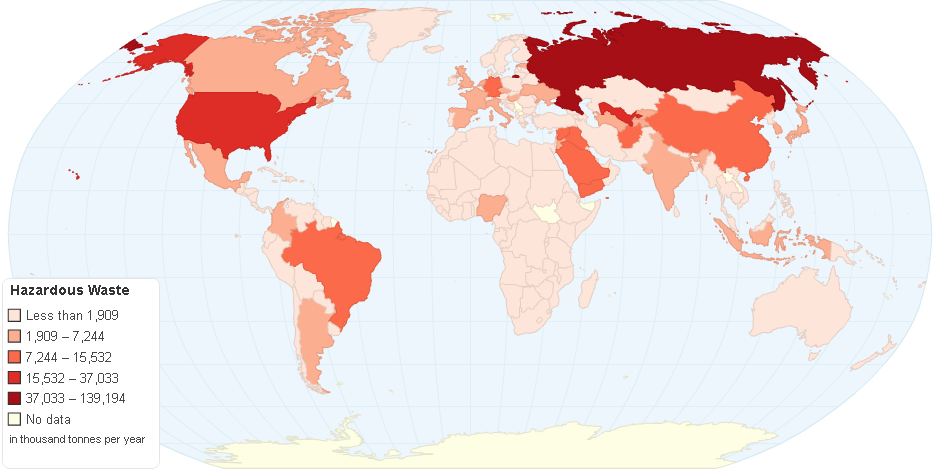This chart shows Hazardous Waste by Country.
Hazardous waste is waste that poses substantial or potential threats to public health or the environment.In the United States, the treatment, storage, and disposal of hazardous waste are regulated under the Resource Conservation and Recovery Act (RCRA). Hazardous wastes are defined under RCRA in 40 CFR 261 where they are divided into two major categories characteristic wastes and listed wastes.
1. Characteristic hazardous wastes are materials that are known or tested to exhibit one or more of the following four hazardous traits:
1.ignitability
2.reactivity
3.corrosivity
4.toxicity
2. Listed hazardous wastes are materials specifically listed by regulatory authorities as hazardous wastes which are from non-specific sources, specific sources, or discarded chemical products.
The requirements of RCRA apply to all the companies that generate hazardous waste as well as those companies that store or dispose hazardous waste in the United States. Many types of businesses generate hazardous waste. dry cleaners, automobile repair shops, hospitals, exterminators, and photo processing centers may all generate hazardous waste. Some hazardous waste generators are larger companies such as chemical manufacturers, electroplating companies, and oil refineries.
These wastes may be found in different physical states such as gaseous, liquids, or solids. A hazardous waste is a special type of waste because it cannot be disposed of by common means like other by-products of our everyday lives. Depending on the physical state of the waste, treatment and solidification processes might be required.
9 years ago

